 HTC are rumoured to have won the contract to manufacture the much-hyped Windows Mobile-based version of Palm’s Treo smart phone.
HTC are rumoured to have won the contract to manufacture the much-hyped Windows Mobile-based version of Palm’s Treo smart phone.
The combination of Windows OS and the Treo’s fabulous form factor could prove a real market winner, although the device’s release is believed to some way off.
An article in the DigiTimes Website reported that the Treo/HTC hybrid was announced in the Chinese-language newspaper the Commercial Times.
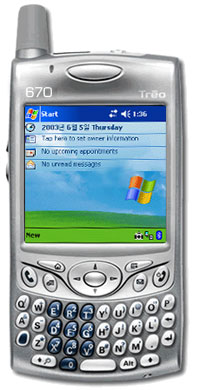 The Taiwan-based High Tech Computer (HTC) firm already manufactures its own popular suite of Windows Mobile-based smart phones and PDA-style communicators, which go under a mass of different names worldwide, depending on the mobile networks operators and handset vendors.
The Taiwan-based High Tech Computer (HTC) firm already manufactures its own popular suite of Windows Mobile-based smart phones and PDA-style communicators, which go under a mass of different names worldwide, depending on the mobile networks operators and handset vendors.
Their big-selling models include the XDA Mini (MDA Compact/ HTC Magician/ i-mate JAM/Qtek s100), XDASII (Qtek 2020/i-mate/Orange SPV M1000/Movistar tsm 500) and XDAIIs (MdaIII/iMate PDA2k/Qtek 9090/HTC Blue Angel/Audiovox 6600/Siemens SX66/Orange SPV M2000).
HTC also undertakes contract manufacturing on behalf of a number of partners, and was said to be producing the Palm OS-based Treo 650 back in September 2004.
Rumours quickly spread that HTC would be creating a Windows Mobile-based Treo called the Treo 670, with a host of fuzzy images purporting to be the new device appearing on the Web.
Both Palm and HTC have staunchly refused to confirm their collaboration.
There’s no denying that HTC would be a logical choice to create a Windows Mobile-based Treo, with some pundits suggesting that the company may have lent some Windows Mobile development expertise to Palm’s design team.
The Commercial Times article suggests that HTC may well have designed the 670 itself, working to the parameters of the standard Treo feature-set and case design.
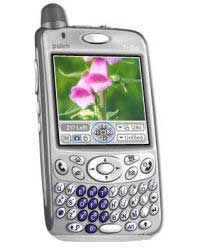 Just as we went to press, another rumour flashed across the Web, with Cool Tech Times showing a fairly convincing photograph of what it reckons is the new Treo 700.
Just as we went to press, another rumour flashed across the Web, with Cool Tech Times showing a fairly convincing photograph of what it reckons is the new Treo 700.
Naturally, large opencast excavations of salt are needed when it comes to these things, but for the record the site claims that the Treo will feature a 1.3 megapixel camera with 8x digital zoom and EVDO capability (EVDO stands for Evolution Data Only, and is the wireless broadband protocol of choice for CDMA networks).
Although the design could have come straight off the screen of some time-rich spoddy Photoshop kid (and we definitely have some doubts about its authenticity), it’s still a pretty looking affair, reflecting the strong points of the Treo’s long standing design ethos.
Whatever the final Treo looks like, it’s only Palm’s hopeless feet-dragging over implementing consumer-demanded features like proper Wi-Fi support that reluctantly sent us to the Windows dark side a few months ago, so whenever the next Treo 670/700/whatever-you-want-to call-it ever surfaces, we’ll take a boxful please!
 Trying to work out the law surrounding this Wi-Fi malarkey seems to be a tricky business.
Trying to work out the law surrounding this Wi-Fi malarkey seems to be a tricky business. According to an article in the Financial Times, Microsoft says it has now built a database containing the whereabouts of “millions” of WiFi networks.
According to an article in the Financial Times, Microsoft says it has now built a database containing the whereabouts of “millions” of WiFi networks. Microsoft has launched the first public beta of its Virtual Earth, an online mapping application overlaying satellite images with local searches and maps.
Microsoft has launched the first public beta of its Virtual Earth, an online mapping application overlaying satellite images with local searches and maps.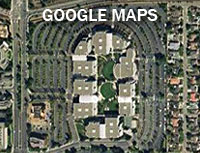 Virtual Earth will also have the capability to visually point out locations for ATMs, restaurants, and petrol stations – something that the rival Google Maps service has been able to do since incorporating satellite imagery in April this year.
Virtual Earth will also have the capability to visually point out locations for ATMs, restaurants, and petrol stations – something that the rival Google Maps service has been able to do since incorporating satellite imagery in April this year.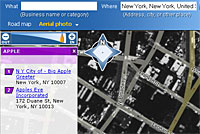 Mac users, however, will have to wait until autumn for a version that runs on their machines.
Mac users, however, will have to wait until autumn for a version that runs on their machines. Wags on the Internet are claiming that Microsoft has virtually wiped Apple off the face of the Web, noting that Apple’s Silicon Valley headquarters – which can be seen in their full glory on Google Maps – appears as nothing more than a deserted parking lot in Virtual Earth.
Wags on the Internet are claiming that Microsoft has virtually wiped Apple off the face of the Web, noting that Apple’s Silicon Valley headquarters – which can be seen in their full glory on Google Maps – appears as nothing more than a deserted parking lot in Virtual Earth. Billed as the “thinnest, lightest, coolest QWERTY on the Planet”, the new Q phone from Motorola has set a few hearts pounding in Chez Digi-Lifestyles.
Billed as the “thinnest, lightest, coolest QWERTY on the Planet”, the new Q phone from Motorola has set a few hearts pounding in Chez Digi-Lifestyles.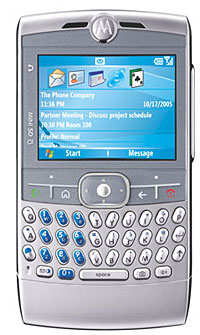 There’s a Mini-SD slot provided for extra storage and connectivity is taken care of via Bluetooth, IrDA and mini-USB.
There’s a Mini-SD slot provided for extra storage and connectivity is taken care of via Bluetooth, IrDA and mini-USB.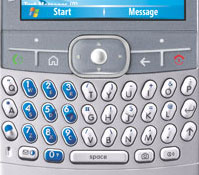 “With the Moto Q, we’ve combined the best voice, data and design technology in one ultra-thin, intelligent, hard-working, and incredibly must-have device. Today’s office space has the potential to be any place you want it to be with Q.”
“With the Moto Q, we’ve combined the best voice, data and design technology in one ultra-thin, intelligent, hard-working, and incredibly must-have device. Today’s office space has the potential to be any place you want it to be with Q.”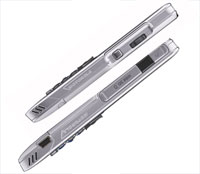 The Moto Q is expected to be available in Q1 2006.
The Moto Q is expected to be available in Q1 2006. KidsOK, a tracking service that lets parents locate their child using a mobile phone, has gone on sale in the UK today,
KidsOK, a tracking service that lets parents locate their child using a mobile phone, has gone on sale in the UK today, The bit that may strike fear into parents trying to foist these phones on their offspring is that fact that kids have to opt in to the KidsOK service and they can turn off the service any time they like.
The bit that may strike fear into parents trying to foist these phones on their offspring is that fact that kids have to opt in to the KidsOK service and they can turn off the service any time they like. Larger families can enable further handsets on payment of £4.95 p.a. per handset (~US$8.75, ~€7.25). Further ‘pings’ are purchased in bundles of 20 from KidsOK for £9.95 (~US$17.5, ~€14.5).
Larger families can enable further handsets on payment of £4.95 p.a. per handset (~US$8.75, ~€7.25). Further ‘pings’ are purchased in bundles of 20 from KidsOK for £9.95 (~US$17.5, ~€14.5).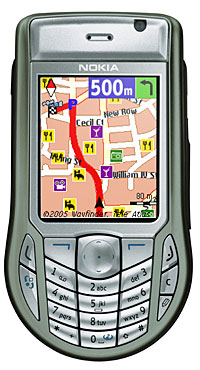 Nokia and Wayfinder Systems have proudly proclaimed the availability of the Nokia 6630 Navigation Pack, a compact smartphone-based navigation package for folks on the move.
Nokia and Wayfinder Systems have proudly proclaimed the availability of the Nokia 6630 Navigation Pack, a compact smartphone-based navigation package for folks on the move. Never one to knowingly undersell his product, Jonas Sellergren, VP Product Management, Wayfinder Systems proclaimed “the Wayfinder Navigator application on the Nokia 6630 brings the ultimate navigation solution to the consumer.”
Never one to knowingly undersell his product, Jonas Sellergren, VP Product Management, Wayfinder Systems proclaimed “the Wayfinder Navigator application on the Nokia 6630 brings the ultimate navigation solution to the consumer.”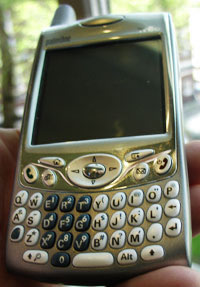 PalmOne has formally launched its Treo 650 in the UK – more than six months after jammy Americans got their mitts on the keenly anticipated smartphone.
PalmOne has formally launched its Treo 650 in the UK – more than six months after jammy Americans got their mitts on the keenly anticipated smartphone. The handset includes useful quad-band GSM/GPRS connectivity for voice and data, with the bundled VersaMail email application supporting a single Microsoft Exchange Server 2003 ActiveSync account and multiple IMAP and POP accounts.
The handset includes useful quad-band GSM/GPRS connectivity for voice and data, with the bundled VersaMail email application supporting a single Microsoft Exchange Server 2003 ActiveSync account and multiple IMAP and POP accounts.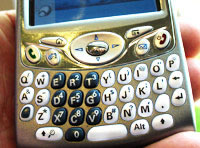 Even with WiFi, Treo users will still be missing out on the killer VoIP application, Skype, so I asked if there were any plans to introduce a version for the Palm platform.
Even with WiFi, Treo users will still be missing out on the killer VoIP application, Skype, so I asked if there were any plans to introduce a version for the Palm platform.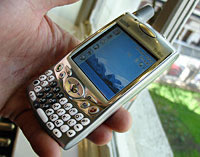 Despite attending an official product launch, I left none the wiser as to when the Treo will actually be available or what other network carriers (apart from Orange) will be offering the phone. Naturally, there wasn’t a peep about pricing plans either.
Despite attending an official product launch, I left none the wiser as to when the Treo will actually be available or what other network carriers (apart from Orange) will be offering the phone. Naturally, there wasn’t a peep about pricing plans either.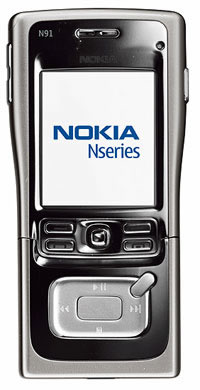 Nokia has launched three new Nseries mobile multimedia handsets, capable of taking print-quality pictures, playing MP3s, reading e-mail, browsing the Web sites and viewing mobile TV.
Nokia has launched three new Nseries mobile multimedia handsets, capable of taking print-quality pictures, playing MP3s, reading e-mail, browsing the Web sites and viewing mobile TV.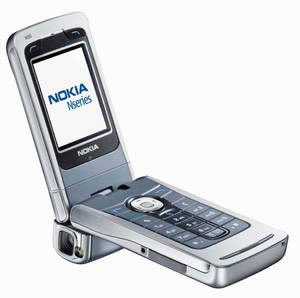 Nokia N90
Nokia N90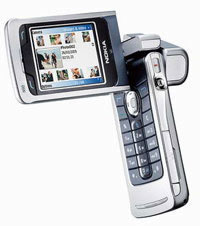 Images, videos and sound can be stored on the phone’s internal 31 MB memory or on the supplied 64 MB RS-MMC
Images, videos and sound can be stored on the phone’s internal 31 MB memory or on the supplied 64 MB RS-MMC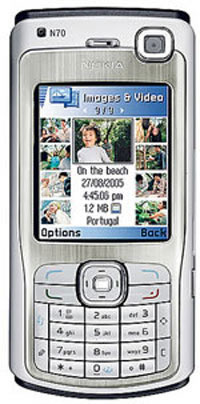 Joe Coles, Director of imaging product marketing at Nokia, stressed the consumer demand for camera-enabled mobiles: “The number one reason why people today purchase new handsets is the camera. Indeed, we foresee that by the end of 2005, over half a billion people worldwide will own a camera phone.”
Joe Coles, Director of imaging product marketing at Nokia, stressed the consumer demand for camera-enabled mobiles: “The number one reason why people today purchase new handsets is the camera. Indeed, we foresee that by the end of 2005, over half a billion people worldwide will own a camera phone.”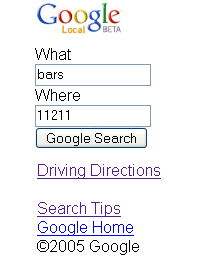 Google is making its local-search service available to mobile-toting users, offering maps and driving directions optimised for the wee screen.
Google is making its local-search service available to mobile-toting users, offering maps and driving directions optimised for the wee screen.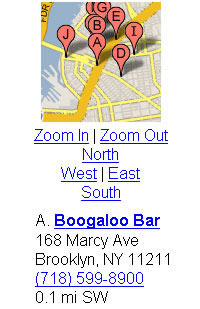 Telephone numbers are displayed as a hyperlink, and if the users’ phone supports the facility, clicking on the link will dial the listed telephone number (unlike some local search services, there is no additional charge for this).
Telephone numbers are displayed as a hyperlink, and if the users’ phone supports the facility, clicking on the link will dial the listed telephone number (unlike some local search services, there is no additional charge for this). Local search services are set to be the big hot potato of 2005, with the Kelsey Group reporting that local search ad spending hit US$162 million (£85m/€125m) in 2004.
Local search services are set to be the big hot potato of 2005, with the Kelsey Group reporting that local search ad spending hit US$162 million (£85m/€125m) in 2004.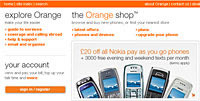 Mobile operator Orange has announced a GSM-based tracking service which it claims is both cheaper and easier to use than GPS technology.
Mobile operator Orange has announced a GSM-based tracking service which it claims is both cheaper and easier to use than GPS technology. Electronic Tracking Systems (ETS), makers of battery powered security tracking devices under the mtrack brand, is one of the first to pilot the product.
Electronic Tracking Systems (ETS), makers of battery powered security tracking devices under the mtrack brand, is one of the first to pilot the product.